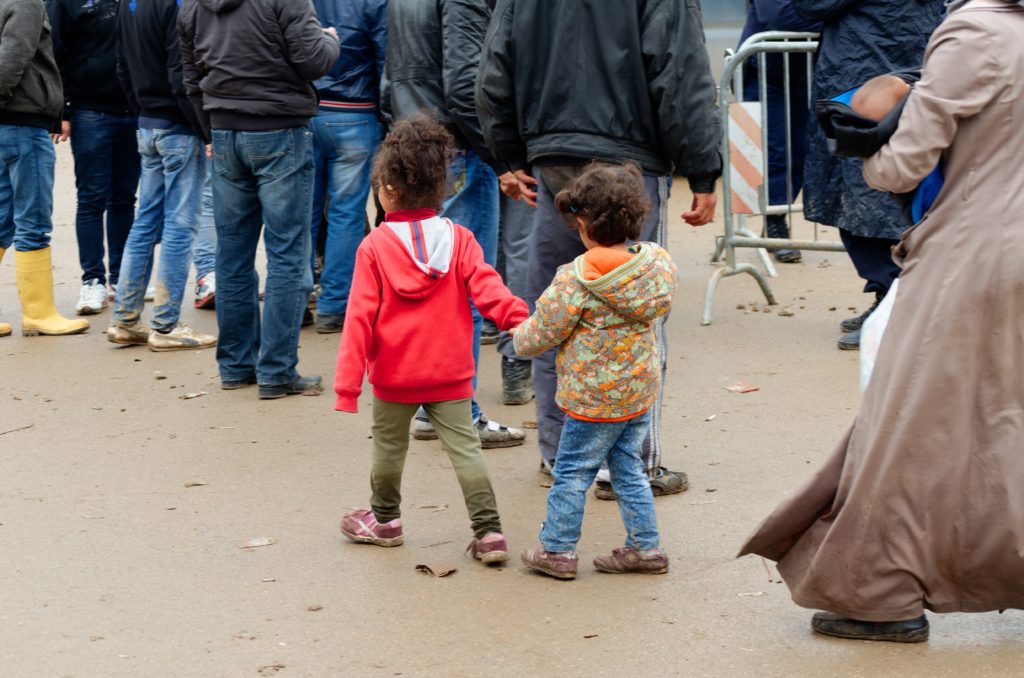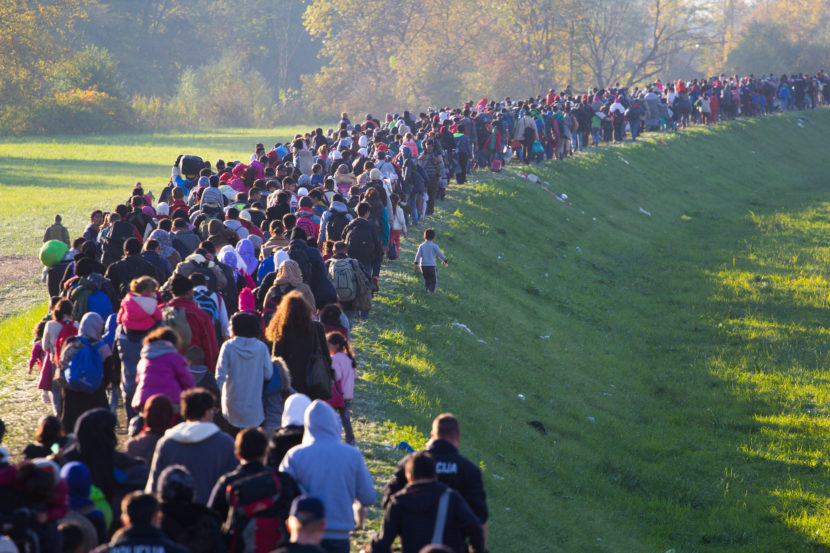The EU Migration and Asylum Pact, adopted in May 2024, aims to streamline the handling of migration and asylum seekers across member states. While this new framework promises more coordinated migration management, it has raised concerns regarding its potential negative impact on children’s rights. The fast-tracking of asylum processes, detention at borders, and family separation risks pose significant challenges to the protection and well-being of migrant children.
Overview of the EU Migration and Asylum Pact
The European Pact on Migration and Asylum, adopted in May 2024, consists of ten legal measures—nine regulations and one directive—aimed at strengthening the fight against illegal immigration and expediting the deportation of individuals without legal status. EU Member States have been given a two-year period to fully implement these provisions (Toute l’Europe, 2024).
One of the central features of the Pact is the introduction of a border screening process. This system will determine within seven days whether an applicant qualifies for immediate return, such as those with previously rejected claims, or if their asylum application should follow an accelerated or standard procedure, depending on the asylum approval rates for their country of origin. In practice, Member States will establish detention centers near the EU’s external borders and in airports, with a collective capacity of at least 30,000 places across the Union (Toute l’Europe, 2024).
Additionally, the Pact promotes greater solidarity among EU nations to avoid overburdening certain countries, such as Italy and Greece, with asylum seekers. Member States with fewer asylum claims can opt to receive some of the applicants or provide assistance to frontline states in other ways. The Pact also includes a crisis response mechanism for mass migration events, the harmonization of reception standards across Member States, and an expansion of the Eurodac database, which is used to manage asylum applications and monitor irregular migrants across the EU (Toute l’Europe, 2024).
Concerns over child protection under the Pact
However, children’s rights organizations have expressed concerns that the introduction of a border screening process may deny children appropriate protection by failing to consider their individual circumstances. The pact allows for the detention of children at external borders, which violates key child protection principles under the UN Convention on the Rights of the Child (UNCRC).
Specifically, Article 37, states that the detention of children should only be used as a measure of last resort and for the shortest appropriate period. Furthermore, this detention could deprive children of essential services such as education and healthcare, exacerbating their vulnerability. (Eurochild).
Detention of minors and its consequences
One of the most alarming provisions in the new pact is the detention of minors at EU borders for screening purposes. The past and current migration crisis show that children suffer horrific violence at the hands of smugglers and border guards stationed at the EU’s external borders. The new Pact risks making the systematic detention of families with children a routine practice, without enhancing their safety.
This is particularly concerning for unaccompanied minors, as the Pact fails to prioritize family reunification, including with siblings, further jeopardizing their well-being. Detention also undermines their access to education and healthcare, as these children are held in facilities where such services are limited or nonexistent. (Save the Children, 2023).
Legal and ethical concerns regarding child detention

The detention of children for screening also raises fairness concerns, especially for unaccompanied minors who may lack documentation to prove their age or may face language barriers. Many children undergo invasive examinations or interviews without proper legal assistance, increasing the risk of mistakes in their asylum applications, which could have long-lasting repercussions on their safety and future (Eurochild, 2024).
The detention of children seeking asylum or migration, whether due to their own or their parents’ migration status, is fundamentally contrary to their best interests and constitutes a violation of their rights. International experts have urged the European Commission to establish clear guidelines for the treatment and care of both accompanied and unaccompanied migrant children under 18 (OHCHR, 2024).
The implementation of the Pact must focus on the best interests of children, ensuring that any restrictions on their movement do not lead to their detention in immigration facilities during screening, asylum, or return procedures. Even short-term detention can have harmful consequences for a child’s physical and mental health, development, and overall well-being. It is crucial to develop alternatives to detention that fully respect children’s rights and provide a supportive environment during the migration process (UNICEF, 2024).
Child protection and family reunification
The Pact has also come under fire for its handling of family reunification, particularly the lack of specific provisions for siblings. Unaccompanied children are often left without any mechanism to reunite with their siblings or extended family members, putting them at increased risk of exploitation and abuse (Save the Children, 2023).
Under the UNCRC, family unity is a fundamental right, and children should be provided with every opportunity to remain or be reunited with their families. Likewise, under ECHR and EU Law authorities are required to keep asylum-seeking families together in reception facilities.
Article 8 of the ECHR, which protects the right to respect for private and family life, imposes a positive obligation on states to ensure regular contact between refugee siblings placed in different locations. Authorities must act to maintain and strengthen family ties, facilitating their reunion and ensuring that family unity is ensured throughout the asylum process (Council of Europe-FRA, 2023).
However, the pact’s limited provisions for family reunification jeopardize this right, leaving children isolated and more vulnerable. Furthermore, the new pact introduces provisions allowing member states to classify certain unaccompanied children as security risks, which could subject them to coercive measures such as biometric data collection.
Besides, the minimum age for data collection has been lowered from 14 to 6. This raises concerns about children’s safety and well-being, as such procedures may involve the use of force or other invasive methods that violate children’s rights from a young age (UNICEF, 2024).
Improving access to essential services for migrant children
According to the European Convention on Human Rights (ECHR), reception conditions for asylum-seeking children, even when they are with their parents, must be tailored to their age to avoid creating stress and anxiety that could have especially traumatic effects. It is crucial that these conditions provide a supportive environment, ensuring the child’s well-being and protection, while minimizing any negative psychological impact during the asylum process (Council of Europe FRA, 2023).
The EU Migration and Asylum Pact’s fast-tracking of asylum procedures for minors could result in children being denied their basic rights. The rapid nature of these processes may prevent children from accessing critical services, such as education, healthcare, and psychosocial support, which are fundamental under the UNCRC and the EU Charter of Fundamental Rights. For children fleeing conflict, access to mental health services and consistent education is vital for their recovery and development, yet the current framework risks depriving them of these essential rights (Eurochild, 2024).
It is essential to establish child-friendly procedures that ensure children’s full access to their rights throughout the migration process. This includes investing in family-based care systems and employing social workers specialized in providing tailored support to children and their families.
EU Member States should endorse independent monitoring systems to guarantee that children’s rights, along with their families’ rights, are respected at every stage of migration and asylum procedures. This would align with the Convention on the Rights of the Child and other human rights treaties, ensuring that appropriate measures are in place to offer remedies when rights violations occur (UNICEF, 2024).
A path to a more protective system
To align the EU Migration and Asylum Pact with international standards, several key changes are essential. Member states should avoid detaining children at borders, opting instead for community-based alternatives that guarantee their well-being and access to essential services. Asylum processes need to be child-friendly, providing legal assistance, translation services, and tailored protection assessments to ensure children’s best interests are upheld.
Enhancing family reunification procedures to include siblings and extended family members is vital to prevent the isolation of unaccompanied minors. Investing in social workers and legal guardians is crucial for the proper care of these children, along with establishing effective monitoring mechanisms to safeguard their rights. While the current framework poses challenges, implementing these recommendations will foster a more supportive and protective system for children, paving the way for a more compassionate and effective migration policy.

Humanium aims at raising awareness of the respect and realization of children’s rights around the world, especially in the context of the migration crisis. With your support, we can continue our efforts to advocate for vulnerable children, provide legal assistance, and improve living conditions in migrant-holding areas. Become a part of our mission by volunteering, donating, or becoming a member.
Written by Jeanne-Marie Quashie
Bibliography:
Council of Europe (2023), Protecting children at Europe’s borders – new guidance for border officials and other authorities, retrieved from Council of Europe at https://www.coe.int/en/web/portal/-/protecting-children-at-europe-s-borders-new-guidance-for-border-officials-and-other-authorities, accessed on September 13, 2024.
Council of Europe FRA – EU Agency for Fundamental Rights (2023), Children in migration: fundamental rights at European borders, retrieved from the Council of Europe at https://www.coe.int/en/web/portal/–/protecting-children-at-europe-s-borders-new-guidance-for-border-officials-and-other-authorities, accessed on September 13, 2024.
Eurochild (2024), The EU Migration and Asylum Pact will put children in danger, retrieved from Eurochild at https://eurochild.org/news/the-eu-migration-and-asylum-pact-will-put-children-in-danger/ , accessed on September 13, 2024.
Gaillard Barthélémy (2024), Qu’est-ce que le Pacte européen sur la migration et l’asile ?, retrieved from Toute l’Europe at https://www.touteleurope.eu/l-ue-dans-le-monde/que-contient-le-pacte-europeen-sur-la-migration-et-l-asile/ , accessed on September 13, 2024.
Office of the High Commissioner for Human Rights [OHCHR] (2024), Child immigration detention must be prohibited following adoption of EU migration and asylum pact, retrieved from the United Nations at https://www.ohchr.org/en/press-releases/2024/05/child-immigration-detention-must-be-prohibited-following-adoption-eu, accessed on September 13, 2024.
Save the Children (2023), Historically bad: New EU pact on migration and asylum normalises rights violation and endangers children, retrieved from Save the Children at https://www.savethechildren.net/news/historically-bad-new-eu-pact-migration-and-asylum-normalises-rights-violations-and-endangers , accessed on September 13, 2024.
UNICEF (2024), EU migration and asylum deal must uphold our collective responsibility to protect children Statement by Regina De Dominicis, Regional Director for UNICEF Europe and Central Asia Regional and Special Coordinator for the Refugee and Migrant Response in Europe, retrieved from UNICEF at https://www.unicef.org/eca/press-releases/eu-migration-and-asylum-deal-must-uphold-our-collective-responsibility-protect , accessed on September 13, 2024.


